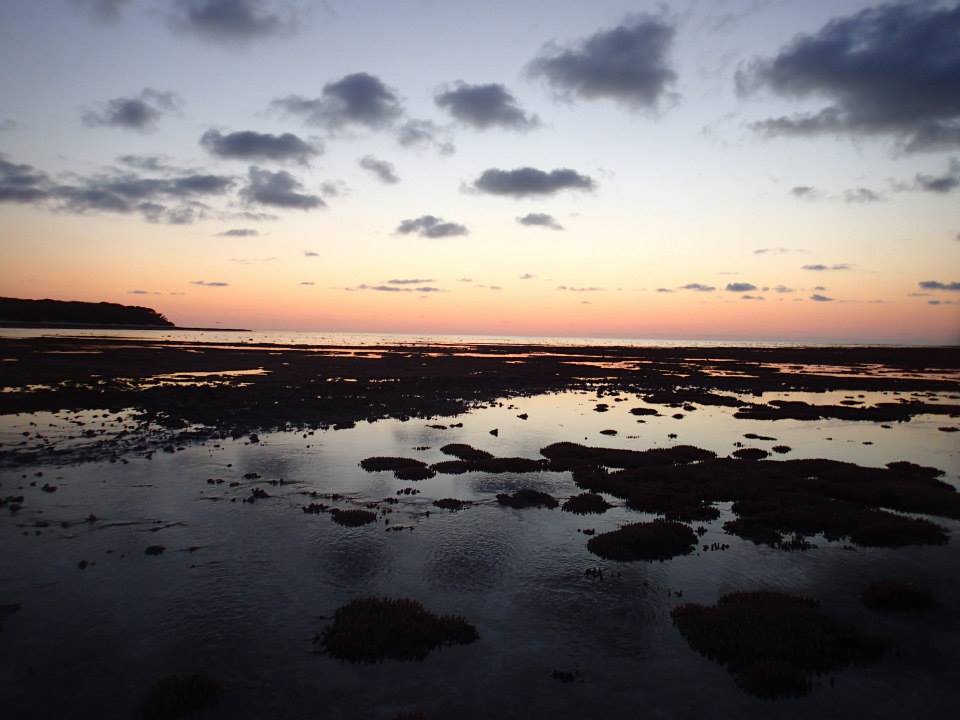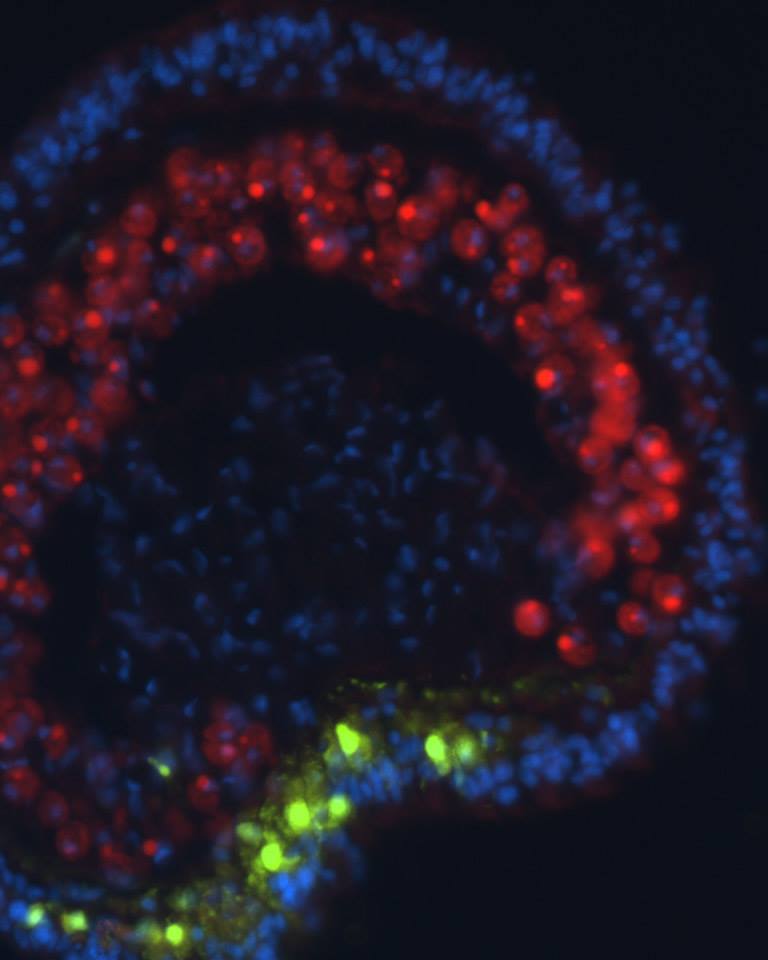Ecology
Because it is a sessile organism that lives attached to the substrate (Mather & Bennett 1994), this Protopalythoa species is unable to retreat with the lowering tides, and as such is left exposed for periods of time during the day. In air, biotic factors such as temperature and oxygen availability drastically differ to that in water, and the levels of UV radiation are extremely high (Soares et al. 2011). It is factors like these, as well as wave action, oceanic currents, salinity and turbidity of the water that have a massive influence on the types of organisms that can survive in the reef crest zone (Gosliner et al. 1996).

|
| The inter-tidal reef crest zone of Heron Island at sunset. Photograph taken by Georgina Walker. |
This colony of Protopalythoa species was found in the inter-tidal reef crest zone on the southern side of Heron Island, attached to a dead hard coral branch, at low tide. In order to prevent drying out when exposed to the air and sun at low tides, the polyps secrete mucus, which also provides protection from the detrimental effects of UV exposure (Erhardt & Knop 2005).
These species are known to be fast secondary settlers (Erhardt & Knop 2005), and with the incorporation of symbiotic zooxanthellae into their body tissue, they are able to supplement their energy requirements if plankton and other particulate matter become scarce (LaJeunesse et al. 2004; Mather & Bennett 1994).
Data collected from the study by LaJeunesse et al. (2004) show that the diversity of zooxanthellae present in the reefs surrounding Heron Island is mostly from Clade C of Symbiodinium.
In order to determine whether zooxanthellae was present in this species, the presence of chlorophyll was examined using a UV-1700 PharmaSpec UV-VIS Spectrophotometer.
This was achieved by separating a single polyp from the colony, which was then ground using a mortar and pestle in approximately 10mL of cold methanol. This solution was then placed into a plastic tube and centrifuged at 2650g for 5 minutes. The solution was then transferred to a separate flask, and the pellet remaining was mixed with another 5ml of methanol and centrifuged for 5 minutes at 1250g. This process was repeated until the solution no longer came out green. Once this was achieved, the solution collected in the separate flask was allowed to sit at room temperature, and was then topped up to a total of 25ml with methanol. The spectrophotometer was used to measure the absorption of the extracted solution between the wavelengths 750 nm and 640nm. Using 1cm light path cuvettes, the spectrum was measured.
A peak was detected at 664.4 nm, illustrating the presence of Chlorophyll A, and at 651.2 nm for Chlorophyll B. Concentration of chlorophyll in the extracts was calculated, with values given in mg/L, using the following equations, modified from Porra (2005):
| Chlorophyll A concentration = (16.29 x peak of Chlorophyll A) - (8.54 x peak of Chlorophyll B) |
| Chlorophyll B concentration = (30.66 x peak of Chlorophyll B) - (13.58 x peak of Chlorophyll A) |
| Chlorophyll A+B concentration = (22.12 x peak of Chlorophyll B) - (2.71 x peak of Chlorophyll A) |
Chlorophyll a was found to have a concentration of 1.73 mg/L, and chlorophyll B had a concentration within the extract of 2.52 mg/L. Total chlorophyll concentration was 3.19 mg/L.

|
|
Fluorescence image of sectioned polyp tentacle. Evidence of photosynthetic algae in these organisms indicated by the presence of red fluorescence.
(40x magnification)
|
From these results, it is evident that chlorophyll, and potentially a symbiotic zooxanthellae, is present in this organism, which means that this species of Protopalythoa gains some of the energy it uses for its metabolic processes from photosynthesis. This is supported by the discovery of algal cells in the tissues of the sectioned organisms, outlined in the page ‘Anatomy and Physiology’. |